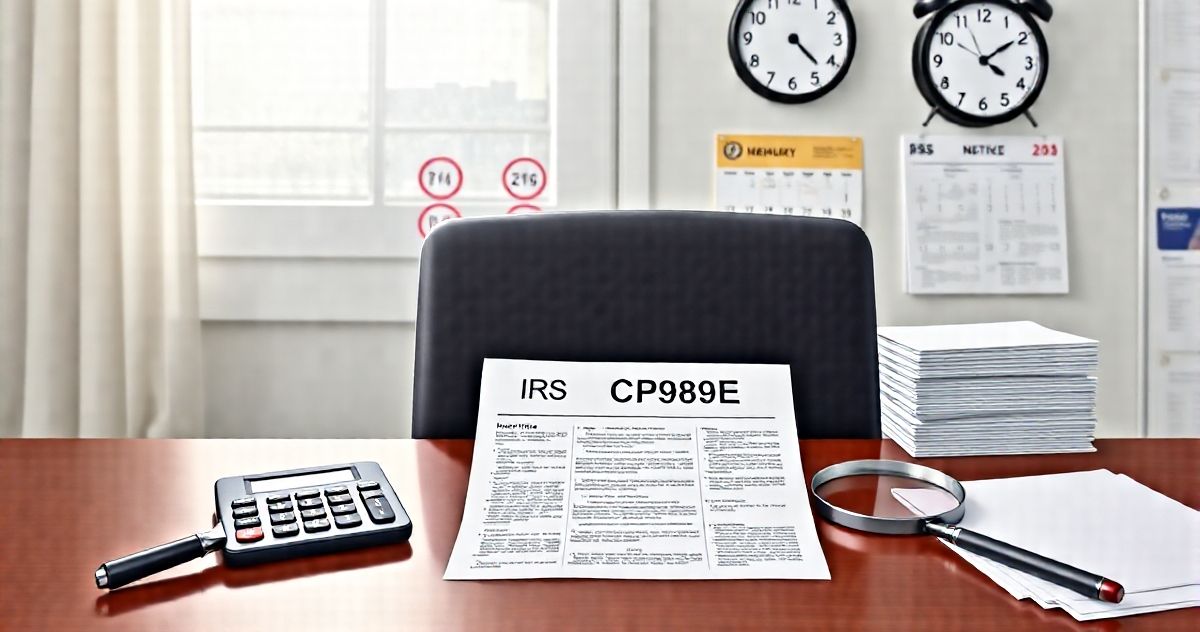Understanding the CP89E Notice: A Detailed Overview
The CP89E Notice is an essential communication tool used by the Internal Revenue Service (IRS) to alert taxpayers about significant adjustments made to their tax accounts. This notice plays a crucial role in the tax administration process, ensuring that taxpayers are aware of any changes or errors identified in their filings. Understanding the details of this notice is vital for taxpayers who wish to maintain compliance and manage any potential tax liabilities effectively.
What is the CP89E Notice and Its Primary Purpose?
The CP89E Notice serves as an official alert from the IRS to taxpayers, indicating that critical corrections or adjustments have been made to their tax accounts. These modifications typically arise from discrepancies or inconsistencies detected in previously filed tax returns or from new information received by the IRS. The primary purpose of the CP89E Notice is to ensure transparency and prompt taxpayer awareness about the status of their tax accounts, which may involve recalculated refunds, additional taxes owed, or corrected data concerning income, credits, or deductions.
Key Features of the CP89E Notice
Key components of the CP89E Notice include:
- Explanation of Adjustments: The notice provides a detailed breakdown of each adjustment made, along with the rationale behind them. This might include recalibrations based on discrepancies between filed returns and third-party information like W-2s or 1099s.
- Impact on Financial Outcomes: It thoroughly outlines the effect of these adjustments, specifying whether they result in a balance due, a change in the expected refund, or both. This section is critical for taxpayers to understand their updated financial standing with the IRS.
- Details on Interest and Penalties: In cases where adjustments lead to an underpayment, the notice will detail applicable penalties and interest, alongside payment deadlines and options.
- Response and Action Steps: The CP89E Notice includes instructions on the necessary actions taxpayers must take. This might involve making a payment, filing an amended return, or submitting documentation to contest the adjustments.
Relevant Filing or Compliance Requirements
Compliance with the CP89E Notice is vital for taxpayers to avoid further consequences and maintain good standing with the IRS. Some actions may be required upon receipt of this notice:
- Confirm Adjustments: Taxpayers should thoroughly review the adjustments outlined in the notice to verify their accuracy, ensuring personal records align with IRS findings.
- Make Timely Payments: If there’s a balance due, taxpayers must make the necessary payment by the specified due date to avoid additional penalties and interest charges.
- Dispute Disagreements: If a taxpayer disagrees with the notice’s findings, they may need to initiate a formal dispute. The notice typically provides instructions on how to proceed with this, including the submission of supporting documents.
- File Amendments When Necessary: Taxpayers might need to file an amended return (Form 1040X) for issues not addressed by the CP89E Notice to ensure comprehensive compliance.
Penalties and Consequences for Non-Compliance
Neglecting the CP89E Notice can result in severe financial consequences. Key repercussions include:
- Increased Financial Burden: Unaddressed balances after receiving a CP89E Notification will continue to accrue additional penalties and interest rates, increasing the overall debt owed to the IRS.
- IRS Enforcement Actions: Prolonged non-compliance with tax obligations may trigger enforcement measures such as levies, liens, or wage garnishments.
- Higher Risk of Audit: Ignoring the notice may enhance the likelihood of the taxpayer’s future returns being selected for a thorough audit, given a history of unresolved discrepancies.
The Importance of the CP89E Notice in Tax Resolution
The CP89E Notice holds significant importance in tax resolution processes and overall financial compliance:
- Promotes Accuracy: By identifying and reporting discrepancies, this notice helps ensure that taxpayer accounts accurately reflect their tax obligations, fostering transparency and compliance.
- Facilitates Efficient Tax Debt Resolutions: Prompt action on the CP89E Notice can aid in reducing penalties, arranging payment plans, or potentially seeking offers in compromise, thereby mitigating long-term financial burdens.
- Guides Future Tax Practices: The adjustments indicated by the CP89E Notice serve as a learning opportunity for taxpayers to enhance their record-keeping and filing practices, reducing the likelihood of repeated errors or omissions in subsequent filings.
Overall, the CP89E Notice remains a critical document for taxpayers, mandating swift attention and response to ensure ongoing tax compliance and effective financial management. Through understanding and appropriately addressing the adjustments highlighted in this notice, taxpayers can significantly minimize potential tax-related stress and financial liabilities, ensuring a smoother interaction with the IRS and better alignment with their fiscal responsibilities.

